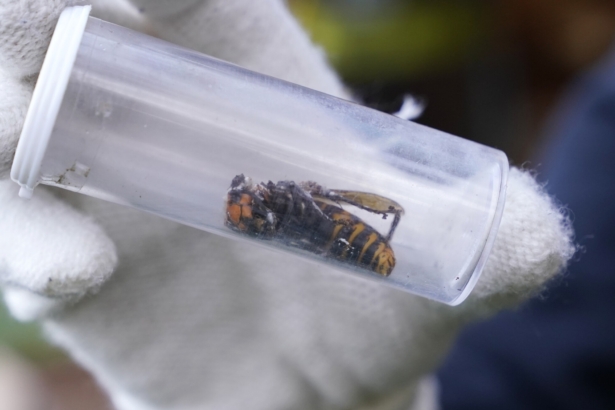The northern giant hornet, dubbed the “murder hornet” for its aggressive nature and potentially deadly sting, has been eradicated from the United States five years after it was first identified in the country, officials announced on Dec. 18.
Formerly known as Asian giant hornets, the invasive species was first detected in North America in British Columbia, Canada, in August 2019. A few months later, the species, native to Asia, was confirmed in Washington state when a resident of Whatcom County reported a specimen in December 2019.
Although the two discoveries were made within a close timeframe and proximity, DNA evidence suggested that they resulted from two separate introductions, as specimens from each location appeared to originate from different countries.
Amid concerns the hornets posed a threat to other insects, eradication efforts began.
After three years without any confirmed detections, the Washington State Department of Agriculture (WSDA) and the U.S. Department of Agriculture (USDA) have declared the hornets eradicated.
“We’re pleased to announce the eradication of the northern giant hornet in Washington state,” WSDA Director Derek Sandison said in a statement. “I’m incredibly proud of our team, which has dedicated years of hard work to safeguarding our state and the nation from this invasive threat to our native pollinators and agriculture.”
The northern giant hornet is the largest in the world and can measure up to 2 inches (5 cm) long, according to the USDA’s Animal and Plant Health Inspection Service (APHIS).
While the species doesn’t generally attack people unless it feels threatened, its sting is more dangerous than that of a honey bee, WDSA and USDA said.
Had the hornets become established in the United States, they could have posed a “significant threat” to pollinators, native insects, and honey bees. They can wipe out a honey bee hive within hours by decapitating the bees, defending the hive as their own, and taking the brood to feed their young.
WSDA said it “found and eradicated” a single hornet nest in October 2020 and three more in August 2021 and September 2021.
All nests were inside alder tree cavities, the department said.
WSDA continued state and public trapping efforts through this year in Whatcom County and no additional hornets were detected in the area.
While a member of the community reported a suspicious hornet sighting in Kitsap County, south of Port Orchard, in October 2024, the WSDA was unable to obtain the hornet and, therefore, could not confirm the presence of a new county record for the species.
A similar situation occurred in 2020 when a single hornet specimen was found in Snohomish County, the department said. DNA evidence confirmed that the specimen was not related to the Whatcom County detections.

WSDA said it will conduct trapping in the area in 2025 as a precautionary measure
“Although they are now eradicated from the state, we’ll always be keeping an eye out for them and encourage community members to do the same,” WSDA Pest Program Manager Sven Spichiger said. “They got here once and they could do it again.”
The Associated Press contributed to this report.
From The Epoch Times

